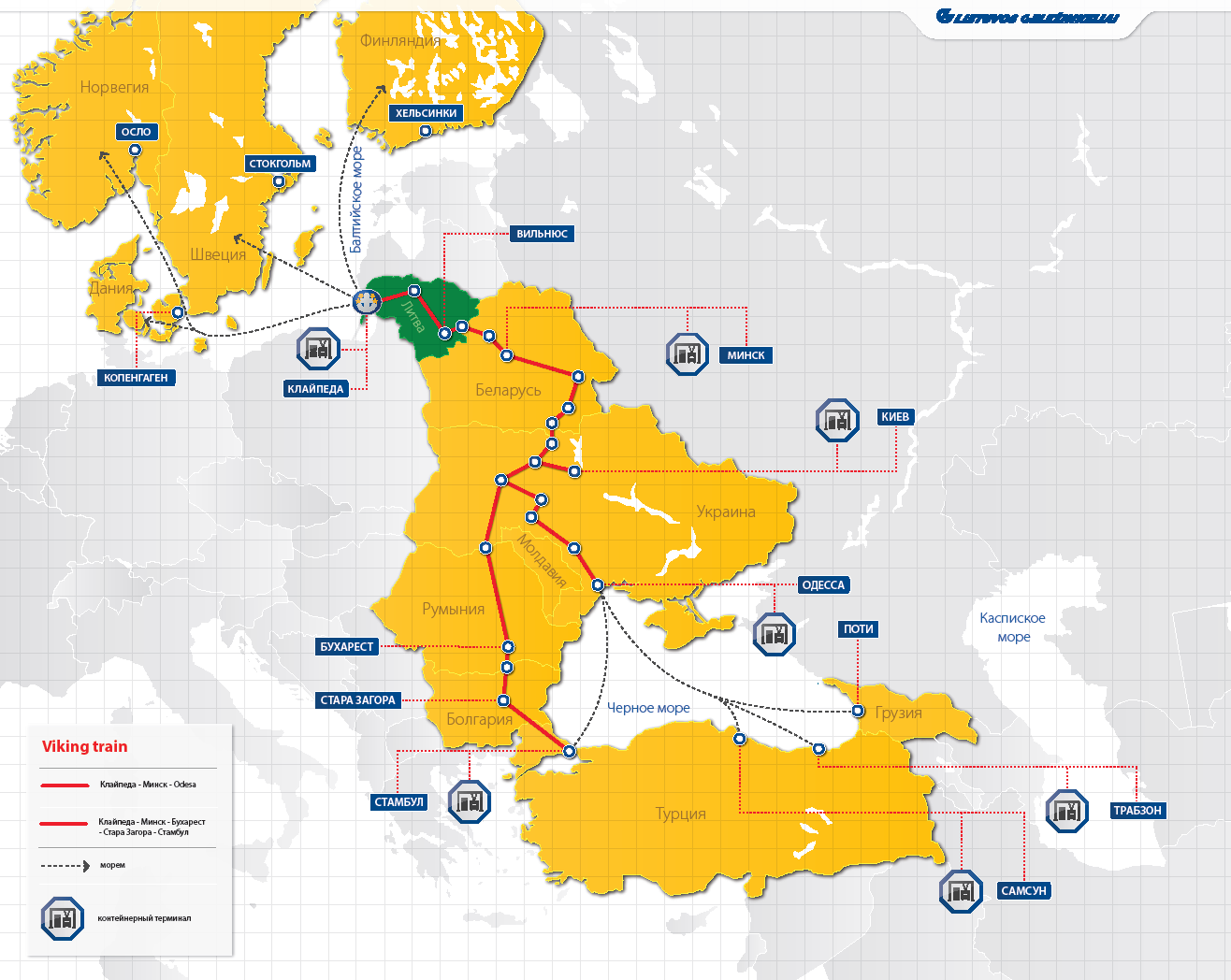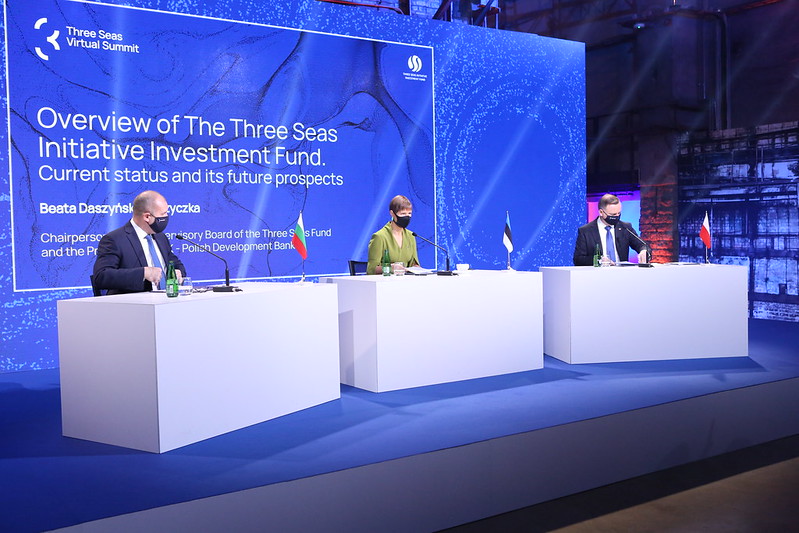Ukraine is excluded from most of the Central European cooperation initiatives, the largest of which is the Three Seas Initiative
Tallinn summit: main outcomes
This was the main foreign policy event of Tallinn in 2020; due to the COVID-19 pandemic, it was held as a virtual summit and web forum instead of a traditional in-person meeting. Three out of ten presidents of the 3SI participating states (Estonian president Kersti Kaljulaid, Polish president Andrzej Duda and Bulgarian president Rumen Radev), as well as US Under Secretary of State for Economic Growth, Energy, and the Environment Keith Krach attended the summit in person, while others joined it online. The agenda of the Tallinn summit had four main blocks:- a presidents' virtual panel followed by a high-level discussion and virtual press conference of the heads of states;
- a panel on Smart Money followed by a discussion held on the ministerial level;
- a short panel on defending democracy and connectivity in the cybersphere;
- and the last panel on Smart Connectivity.
Possible ways for Ukraine to get involved
The Three Seas Initiative has been discussed in Ukrainian expert circles for many years. At its foundation, the format of the Initiative was not exclusively for EU members and Ukraine could theoretically take advantage of the window of opportunity to join in the first year of its creation. In 2016, Ukraine got an invitation to participate in the first 3SI summit in Dubrovnik (Croatia). However, no representatives from Ukraine was delegated to the event. In order to avoid dwelling on events that took place five years ago, Ukraine should focus on its capabilities today. After all, every year, top officials voice Ukraine's interest in the Initiative. However, it's necessary to go beyond statements and shape the country's priorities in the Black and Baltic Seas, as well as identify key projects. There are several possible scenarios for Ukraine to participate in the Three Seas Initiative.Scenario #1. Political presence
Ukraine's participation at the Presidential level is possible at the Summit at the invitation of the hosting country. To do this, it is necessary to strengthen dialogue, develop good relations at the bilateral level, and build up Ukraine's uniqueness and the importance of joining with the countries hosting the summit. For example, these could be proposals to strengthen communication with neighboring countries in the region or extend the impact of 3SI projects beyond EU member states.Scenario #2. A partnership format, like the United States or Germany
Despite Ukraine lacking resources to invest in the Three Seas Investment Fund, the country is geopolitically unique. Although the Initiative is based on infrastructure, issues of security and the neighborhood of Ukraine cannot be completely ruled out. All participating countries understand this, but it is up to Ukraine to raise the issue. During a video conference in late September, Estonian president Kersti Kaljulaid mentioned Ukraine in the context of the Three Seas Initiative Investment Fund. According to her, if the Fund succeeds in funding projects in the 3SI participating states, it can be further used for the needs of Ukraine and the Western Balkans. After all, it is the lack of funding that hinders the implementation of the Ukrainian part of the 3SI projects. The importance of Ukraine's active participation in various regional initiatives should also be included in the same scenario. The best format for this is the EU Macro-Regional Strategy for the Danube Region (EUSDR), where Ukraine is a full participant and which it even plans to chair in 2022. [boxright]Ukraine, Poland, and Lithuania create “Lublin Triangle,” stirring memories of 17th century republic[/boxright] Adding to Ukraine's advantage is that most of the projects, whether in the 3SI, or in the EUSDR, or in the EU’s Baltic macro-regional strategy, are intertwined and fall under identical goals and objectives. Most countries do not focus on whether a participant is an EU member or a non-EU member. In addition, we should not forget about the Western Balkans, which also located in the region of the three seas, and the results of the projects in the 3SI will affect them. The recently initiated Lublin Triangle trilateral regional format can help synchronize with the region's developmental tasks.
Scenario #3. Project participation
Trending Now
The Baltic Pipe case: disinformation at the service of the Kremlin’s energy policy[/boxright] This scenario is the most optimal and realistic one today. Positive results from Ukraine’s participation in the Three Seas projects will also help change the political format of the Initiative itself in the future.
In total, Ukraine was given the opportunity to join the implementation of 6 out of the 48 infrastructure projects within the 3SI: one in energy; two in the field of transport; three in the digital sphere.



The E40 waterway: Economic and geopolitical implications for Ukraine and the wider region[/boxright] The E40 international waterway project, which had a good chance of implementation and would strengthen the Three Seas Initiative, also deserves a mention. Due to the political situation in Belarus, its future looks unconvincing. This priority was not mentioned at bilateral events during Zelenskyy's and Duda's last meeting in Ukraine. Projects in the field of digitalization, in which Ukraine is involved, provide for the creation of digital platforms aimed at more efficient and faster administration of transport and logistics services online by processing large amounts of information, real-time monitoring of water resources in the Three Seas region, digital modeling of water pollution and drainage. All of the proposed scenarios are complementary and will only be viable if they are addressed on an ongoing basis or incorporated into the region's foreign policy priorities. To sum up, it is important for Ukraine to actively monitor the events that will develop following the Three Seas Initiative Tallinn summit, consider the possibilities for participation in Smart Connectivity and other new projects of the Three Seas.
Geopolitical aspects
The economic and infrastructure benefits notwithstanding, the Three Seas Initiative is interesting to Ukraine from the geopolitical perspective. It шs an additional format to strengthen Ukraine’s relations with the US, as Washington fully supports the Initiative both politically and financially. In 2017 US President Donald Trump attended the second 3SI summit in Warsaw where he expressed his commitment to the overall goals of the Initiative. During the 2020 Munich Security Conference, Secretary of State Mike Pompeo pledged to invest $1 bn to the development of energy infrastructure in the Three Seas region. In August 2020 top American diplomat visited Czech Republic, Slovenia, Austria, and Poland. US interest in the region is driven by a desire to reduce the energy dependence of 3SI participating states from Russia, as well as to resist China's expansion. Due to the participation of the United States as a partner state of the Initiative, the initial economic and infrastructure project acquired a geopolitical meaning. It is worth mentioning that there is another competing undertaking in the region – the Chinese initiative “17+1”. This initiative includes all 3SI participating states (except Austria) and mainly aims at infrastructure development. The US is trying to resist China from entering into the region, as Beijing economic assistance is closely linked to political influence. Having declared a course towards the EU and NATO, Ukraine has to support Western-driven endeavors and avoid getting involved in geopolitical rivalry. Note: A Ukrainian version of this article was first published at European Pravda.
Viacheslav Golub is an analyst at the Ukrainian Institute for International Politics.

